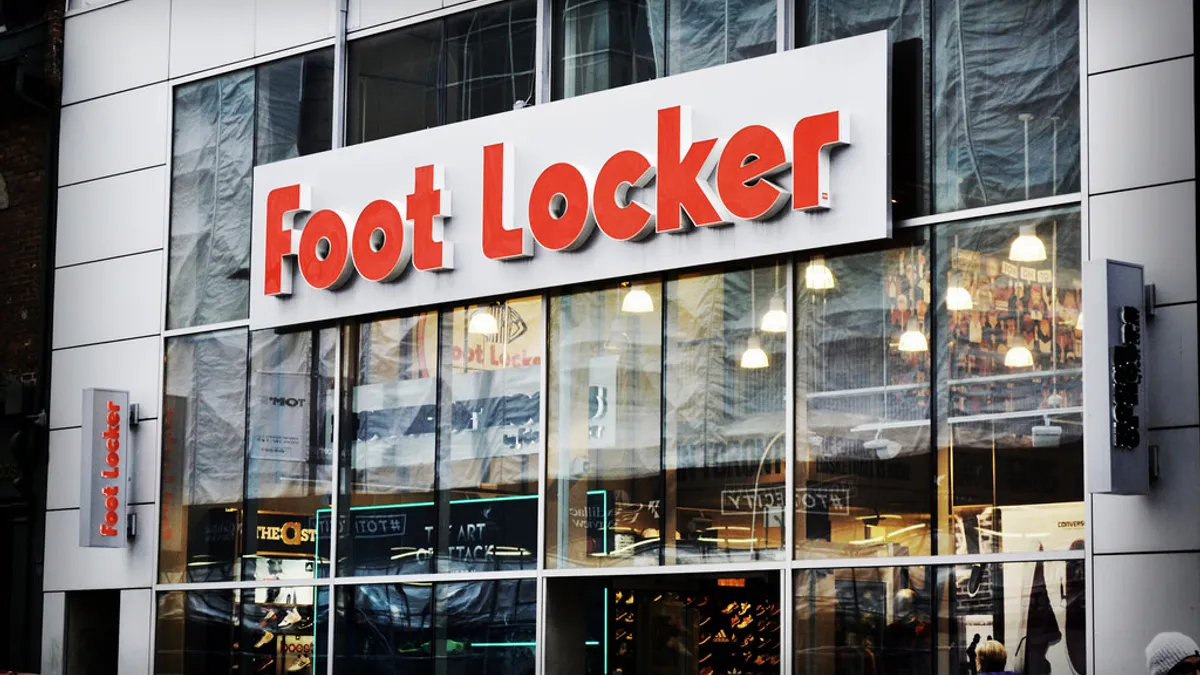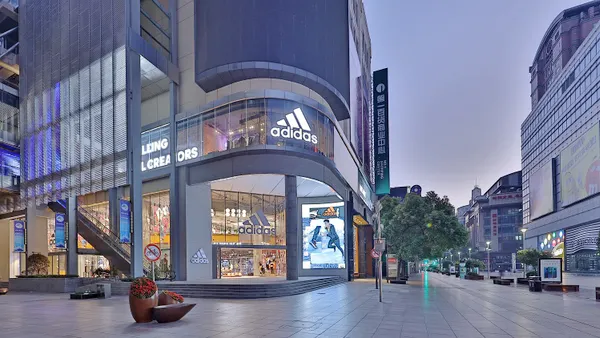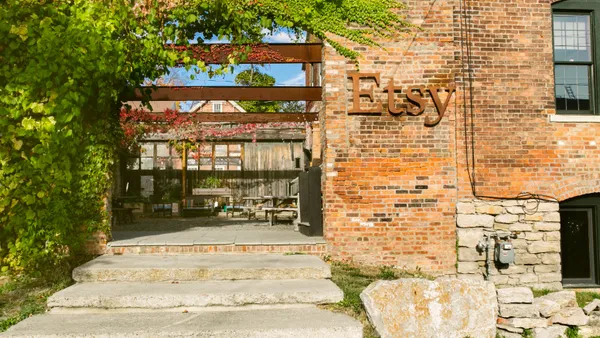Dive Brief:
- Foot Locker on Friday reported first quarter net income of $165 million, an 8.3% decline compared with year-ago net income of $180 million. Despite the drop, the company's $1.38 per share nevertheless blew past Wall Street consensus estimates of $1.25 per share cited in a Wedbush note emailed to Retail Dive.
- There were more beats, sending shares of the athletic shoe retailer up more than 15% Friday morning. First quarter comparable-store sales fell 2.8%, but that outpaced the 3.9% decline expected by Wedbush. And the company’s gross margin rate decreased to 32.9% from 34% a year ago, also beating the Wedbush expectation by 60 basis points.
- As of May 5, Foot Locker’s merchandise inventories were $1.2 billion, 5.4% lower (7.1% lower in constant currency) than at the end of the first quarter last year, which Wedbush analysts noted should help drive the margin going forward.
Dive Insight:
Wall Street rewarded the athletic footwear retailer Friday morning for defying expectations, including its own. In a statement, CEO Richard Johnson credited an elevated assortment.
"The flow of premium product continues to improve, with increasing breadth and depth in the most sought after styles from our key vendors," Johnson said. “[W]e continue to believe that we are poised to inflect to positive comparable-store sales growth as we progress through the year.”
But there are some clues in the report that the company has yet more stepping up to do, complicated by many of its stores’ locations in struggling malls, according to GlobalData Retail Managing Director Neil Saunders. "Although most of Foot Locker's stores remain broadly profitable, many are suffering from reduced footfall and, as a consequence, volumes are down," he said in a note emailed to Retail Dive. "[T]he dynamic here is caused more by heightened competition and a relative lack of brand awareness than mall weaknesses."
Johnson on Friday touted the company's "strategic vendor partnerships and our central position in youth culture." The sneaker business has evolved to one where consumers are hungry for new styles, and woe to the retailer that doesn’t have them. Yet, that retailer, too often, is Foot Locker, Saunders warned.
"Although Foot Locker has good relationships with key vendors like Nike, from whom it is able to secure the latest styles, we believe that its planning process and lead times are too long," Saunders said. "Foot Locker needs to change its internal business model to cope with the new trends in demand. This is far from easy.”
It doesn't help that brands are bypassing traditional retailers and selling directly to customers, including, in Nike’s case, through Amazon. And casual footwear is also becoming a feature of athleisure, so there's more competition.
The retailer is on the right path, according to Saunders, and has made several savvy moves, including new store formats, locations away from malls, increased e-commerce in Asia and an investment in Carbon 38. The last "is a good example of building a foundation for future ventures," Saunders said. "However, there is a lot more work to do if Foot Locker is to regain momentum. It has to firmly put itself on the radar as a destination."












